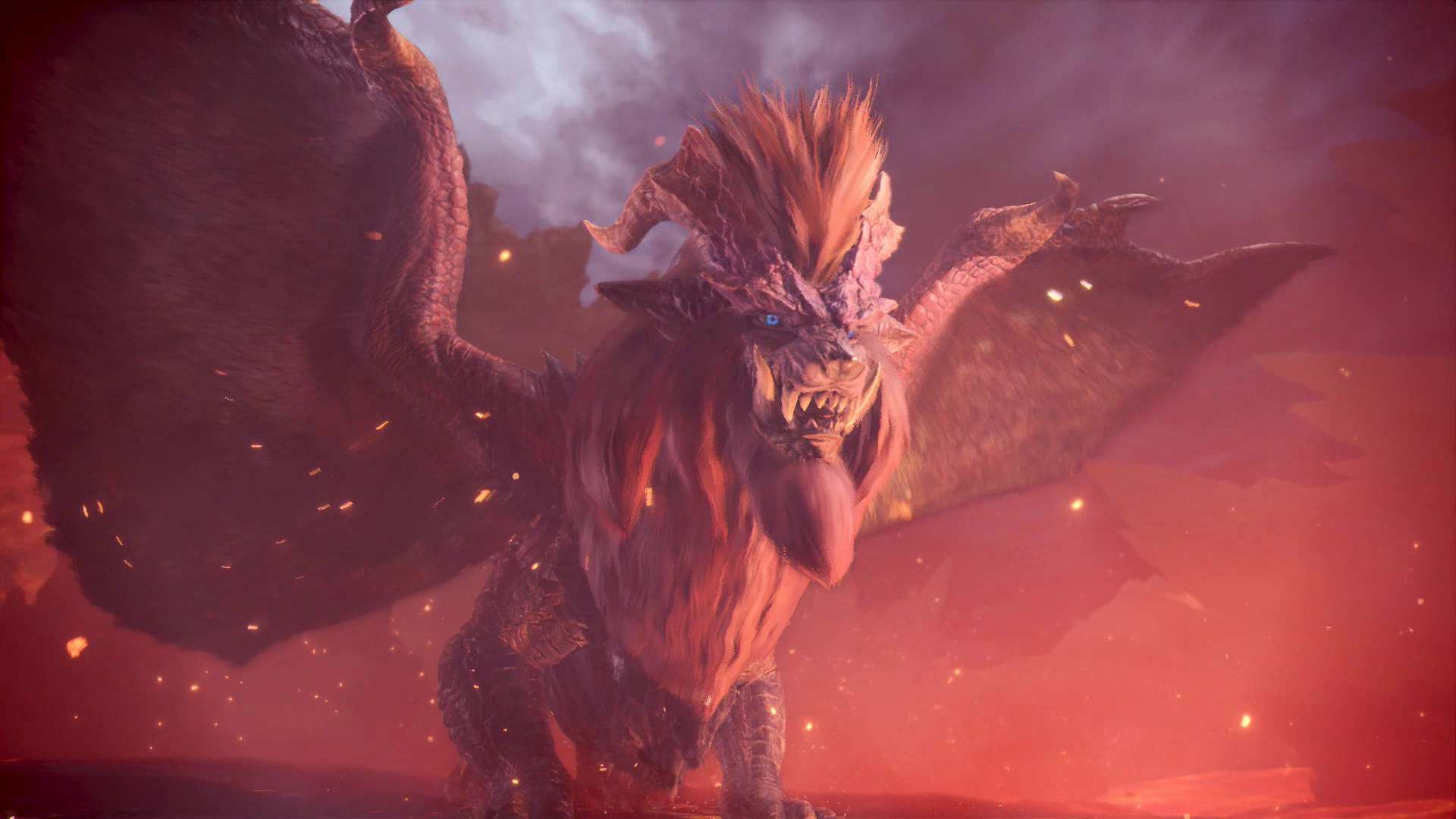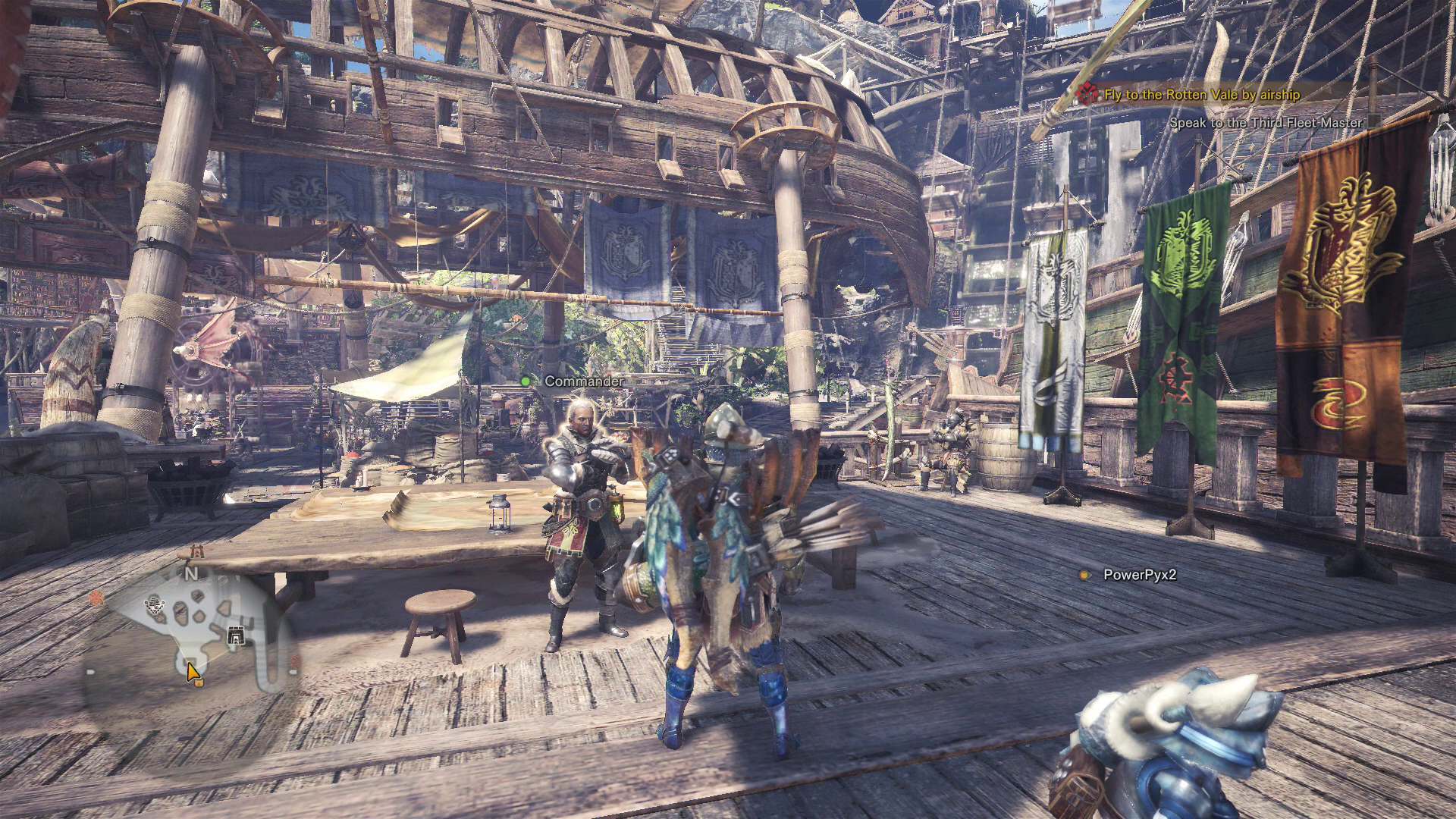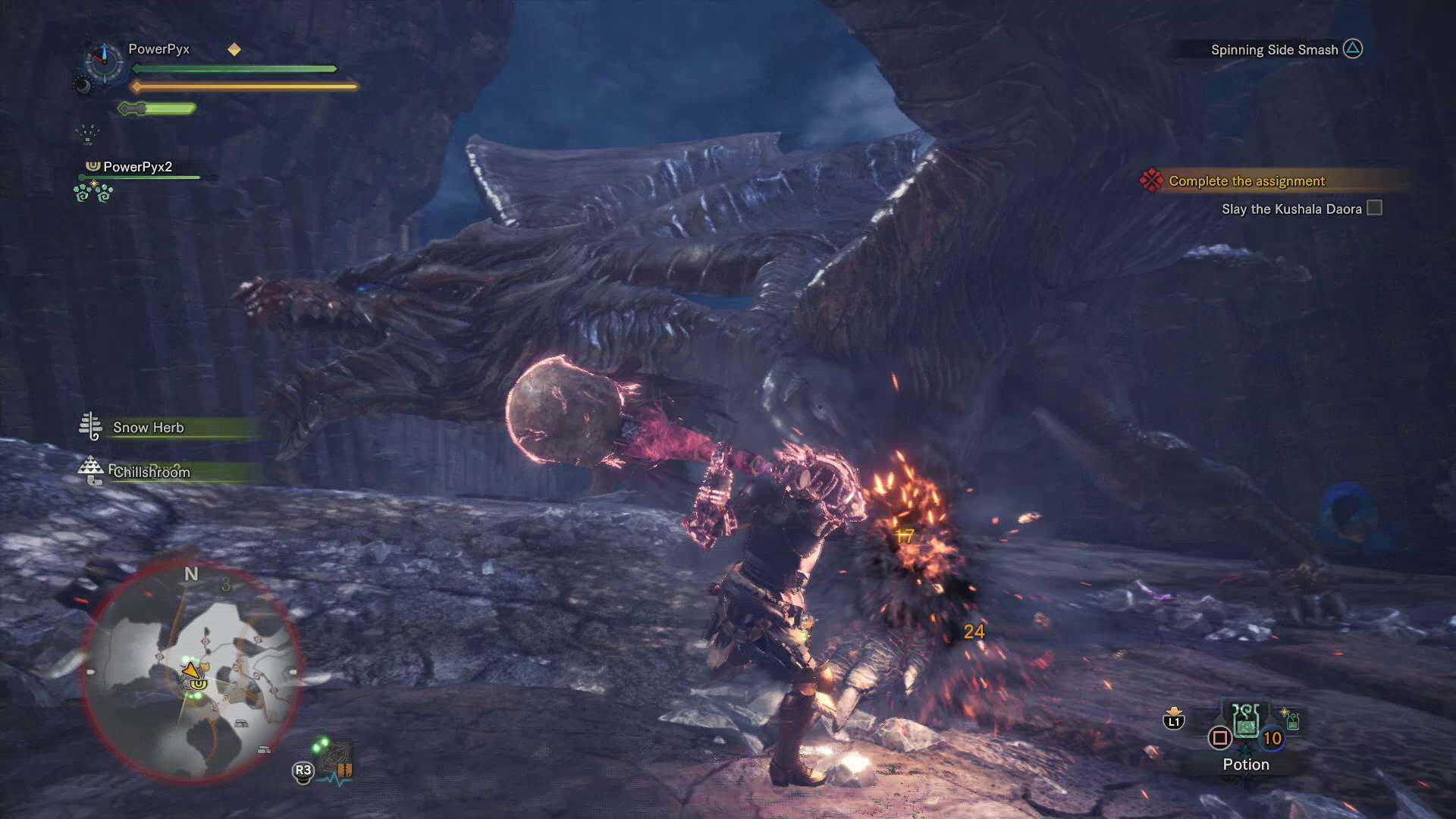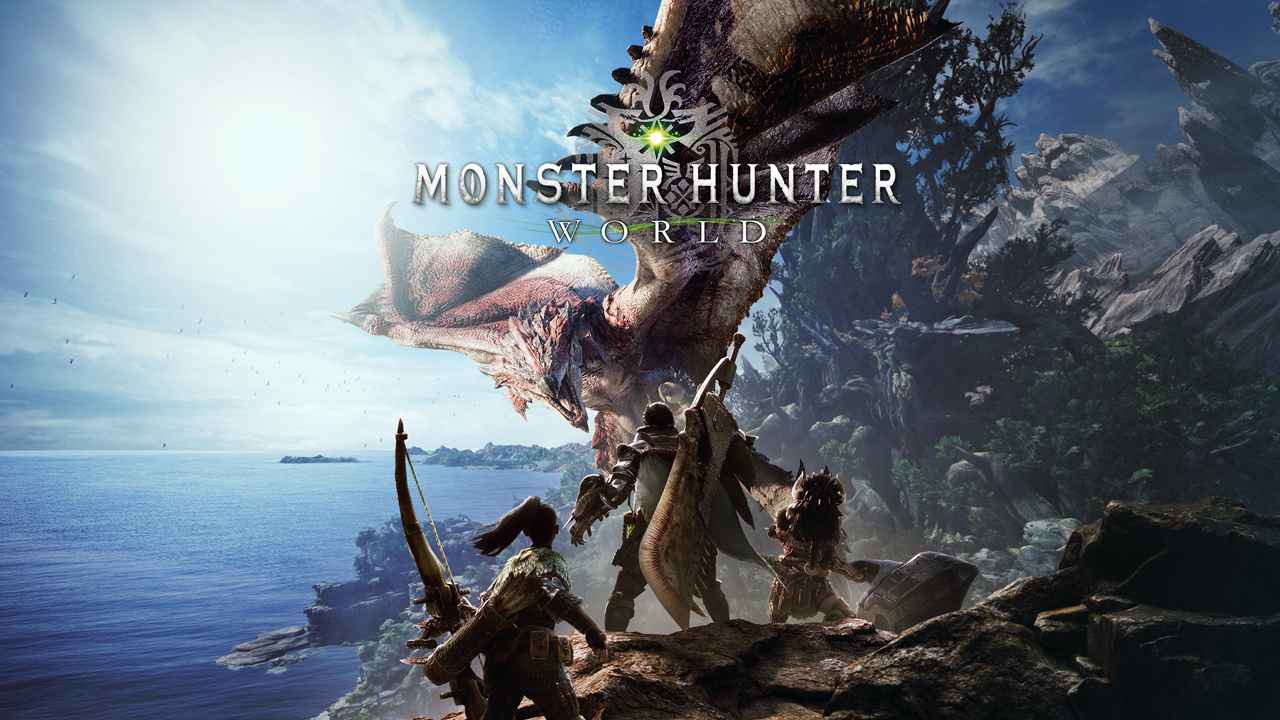Developer: Capcom
Publisher: Capcom
Release Date: January 26, 2018
ESRB: Teen / PEGI 16
MSRP: $59,99
Available Platforms: PS4, Xbox One
Monster Hunter World was my first Monster Hunter game. Aside from the beta, I knew very little about it. The more I kept playing, the more it amazed me how well programmed the game is. There are no bugs, monsters don’t get stuck (and they even fight each other!), the game is only 14GB despite being very content-rich, it runs super smooth, loading times are short, I never had a crash or freeze in 150 hours of gameplay.
It has a way of luring you in with its deep gameplay mechanics, multitude of weapons, and never gets boring. Despite it looking “grindy”, it never felt repetitive to me at all.
Each story quest introduces a new monster. I played most of it solo and didn’t have much trouble. The so-called “Elder Dragons” – the most powerful monsters in the game – are tough solo but quite doable with a group of 4 players. Luckily, you can shoot an SOS flare at any time. If you get stuck, just call for help and people will join within seconds.

What I also found amazing is that I never encountered anyone trolling or intentionally messing up. Other online games often have childish trolls, but the MHW community seems more grown up and helps each other with SOS flare support. The SOS mechanic is perfectly thought out. People can search for SOS flares on the quest board and specify what monster they want to hunt. There are always people who want to farm just one specific monster to get materials for a weapon or armor. So naturally, there is always a demand for finding a specific type of match and there’s always enough supply of SOS flares, too.
Starting an online party with friends or creating a squad (kinda like a Clan) is confusing at first. On PS4 you can make a party chat and join your friends through that. Then someone needs to post a quest on the quest board and others can accept it from the quest board. Players can toggle their status to “ready” when they’re done preparing and the quest leader can then initiate the quest. People can join quests at any stage though. If someone takes more time to prepare they can join in later even when the quest is nearly done.
Quests consist always of killing or capturing a specific monster (sometimes multiple monsters). So the concept is quite simple: You track down a monster by finding its tracks on the map. These are highlighted in green color. Once you’ve found enough monster tracks, your scout flies will show the path to the monster. When you find the monster, you must damage it. Fights consist of multiple phases, the monster will run away after you dealt a certain amount of damage. They usually run/fly away 3-5 times. After the monster starts limping it will go to its nest. Then you got to be quick because it starts to heal itself by sleeping in the nest. A limping monster will die fast, but can also be captured alive for extra rewards. This whole concept is simple, yet fun and well thought-out with deep game mechanics.
There are lots of weapon types, armor sets and monsters to keep things interesting. Naturally, each monster has different strengths and weaknesses. Tracking down a monster enough times will unlock more info in the monster list. They all drop unique things too, which means you have to hunt different monsters to get resources for different armor.
Crafting new armor and upgrading weapons is the core of the progression system.
There is a mind-boggling amount of weapon upgrades and armors. They all look different, too. In total I counted over 400 unique weapon designs and over 130 armor designs. What’s more is that the armor has different designs for male and female characters! They actually look visually different. That makes it more than 260 outfits in the game. I’ve never seen anything like it. All the weapon upgrades & armor look really good and unique, too. They are not just lazy variations. Really outstanding work by the designers here.
Speaking of all-things-progression, there is also a “Hunter Rank” but it does not increase your stats – it’s only used to unlock new quests. Your health and stamina bars stay the same throughout the game. The only way to increase them long-term (but very slightly so) is through armor with special skills. Much more effective is the consumption of food at the Canteen. Eating food gives you huge buffs on health and stamina. The canteen plays an essential role in your survival, if you eat the right meals you can double your life bar but the effect fades when you die. Over the course of the game you will unlock more recipes and food.
You also have a sort of “base” called Astera. It’s an outpost where all the vendors are and where you accept quests. There’s also a botanic garden in Astera that can be upgraded by doing side quests of NPCs. It allows you to grow your own herbs, needed to craft potions and other items.

The crafting system is fairly straightforward. You collect materials (such as ore & bones) during quests or explorations and use them to mix new items. Two base ingredients are required for every craftable item. There are a ton of items to craft (98 consumable recipes).
You can freely explore the 5 maps at any time (without time limit). The maps are big and totally different from each other. There is the Ancient Forest (forest map), Wildspire Waste (desert map), Coral Highlands (mountain map), Rotten Vale (monster graveyard) and Elder’s Recess (lava map).
So what are all the activities you can do?
Open world exploration, story assignments, side quests, investigations, arena matches, and helping with SOS flares.
Arena Matches are a cool feature. Here you get a predefined weapon and armor set and must kill a monster within a certain time limit. The faster you kill it, the better your reward. There are even global leaderboards that show who has the best time. It’s a good way to put your skills to the test, or to just mess around with a new weapon.
Investigations are special monster hunts, often harder than normal quests. Story assignments are main missions and side quests are things you get from NPCs in Astera.
Beating the story took me 80 hours (playing solo). If you shoot SOS flares you can do it quicker. If you rush it and have people helping you, maybe 50 hours and if you take your time doing side quests and farming for better armor along the way, maybe 100 hours. There is certainly more than enough content to justify a full-price purchase.
The story is predictable. That’s okay though, it’s all about the gameplay anyway. I liked that they kept the cutscenes to a minimum. It’s not really a story-driven game, nor is the storyline particularly interesting but it has its moments. In two missions you have to bombard a monster big as a mountain with cannons. Other than that though, they are all normal monster hunts like any side quest or investigation. It works well for this game though, and again, it’s a game you buy for the gameplay and not the story.
Monster hunts are really well done. The monsters can even attack each other! I had up to 3 monsters fighting each other at the same time. It’s really cool to watch. More importantly, nothing ever glitches out. Despite the world being so huge, the monsters never get stuck. That’s some quality programming other developers could learn from!

Trophies
The trophies in this game are grindy and time-consuming. The worst part is getting all Gold Giant Crowns and Gold Miniature Crowns. When they translated the original Japanese trophy list into English the word “Gold” was lost in translation. In the English list it does not specify the crown value but it has to be indeed a gold crown for it to count. Those are even rare than silver crowns and makes the grind much longer. Crowns are determined by a monster’s size (a monster bigger than usual gives a giant crown, a monster smaller than usual gives a miniature crown). While you can affect it by playing high-difficulty investigations, it is still random and takes a long time.
| Gameplay *Overall Enjoyment Factor, Fascination with Game World, Level Design, Variety, Playability, User-Friendliness (Ease of Use / Readability / Controls / in-game Tutorials / Menus) |
| 10/10 |
| Story/Multiplayer *Quality of the Singleplayer Story, Cutscenes and/or Multiplayer Modes (whichever is available). If a game has no Story or no Multiplayer it won’t be rated (thus no negative effect on score). |
| 10/10 |
| Technical Aspects *Graphics, Texture Quality, Character Details, Lighting, Weather Effects, Animations, Loading Times, Number of Loading Screens, does it run smoothly |
| 10/10 |
| Value *Amount of Content, Production Quality, Replay Value, is there enough content to justify a purchase |
| 10/10 |
| Trophies/Achievements *Rates how much fun the Platinum / 1000 Gamerscore is to achieve: Are trophies fun to do? Do trophies restrict freedom of gameplay? Missable trophies? Multiple playthroughs required? Luck-based trophies? Pointless farming/grinding? Glitched Trophies? Are stats/trophies tracked correctly? |
| 7.5/10 Too much randomness and grinding with the gold crowns. Other than that a beautiful list. |
| Extraordinary Score Increase or Deduction *Reserved for extraordinarily good or bad features that the other categories don’t cover (such as game-breaking bugs). This score is directly added/subtracted from the final score. |
| +0.5 Points: For free content updates and events over time, no need to buy DLC and no microtransactions. Nice to see a dev team supports their product out of love, not greed. |
VERDICT:
Monster Hunter World is one of the best games this console generation so far. What a fantastic start to 2018!
FINAL SCORE:
10/10
Reviewed on PS4 Pro. Finished the story, played for 150 hours+, wrote a full wiki and trophy guide.
Review copy provided by the publisher. For more on how reviews are scored, check out the Review Policy.

